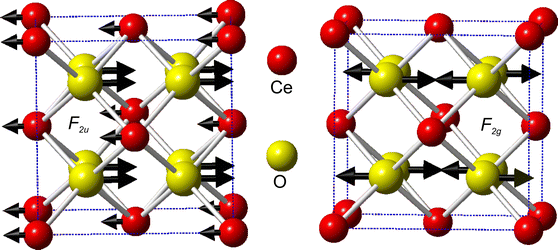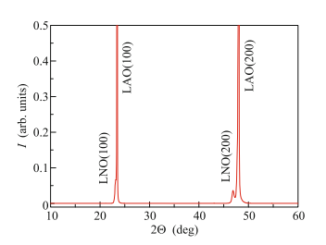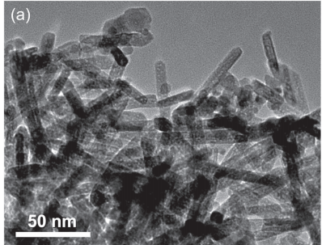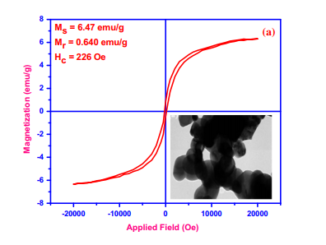
Far-infrared spectroscopic study of CeO2 nanocrystals
Abstract: We present the far-infrared reflectivity spectra of 5 nm-sized pure and copper-doped Ce1−x Cu xO2−y (x = 0; 0.01 and 0.10) nanocrystals measured at room temperature in the 50–650 cm−1spectral range. Reflectivity spectra were analyzed using the factorized form of the dielectric function, which includes the phonon and the free carriers contribution. Four oscillators with TO energies of approximately 135, 280, 370, and 490 cm−1 were included in the fitting procedure. These oscillators represent local maxima of the CeO2 phonon density of states, which is also calculated using the density functional theory. The lowest energy oscillator represents TA(L)/TA(X) phonon states, which become infrared-active E u modes at the L and X points of the Brillouin zone (BZ). The second oscillator originates from TO(Γ) phonon states. The oscillator at ~400 cm−1 originates from Raman mode phonon states, which at the L point of BZ also becomes infrared-active E u mode. The last oscillator describes phonons with dominantly LO(Γ) infrared mode character. The appearance of phonon density of states related oscillators, instead of single F 2uinfrared-active mode in the far-infrared reflectivity spectra, is a consequence of the nanosized dimension of the CeO2 particles. The best fit spectra are obtained using the generalized Bruggeman model for inhomogeneous media, which takes into account the nanocrystal volume fraction and the pore shape.
Author(s): Popovic, Z. V.; Grujic-Brojcin, M.; Paunovic, N.; et al.
Journal of Nanoparticle Research
Volume: 17 Issue: 1 Published: 2015
DOI: http://doi.org/10.1007/s11051-015-2859-y
PDF: Far-infrared spectroscopic study of CeO2 nanocrystals




